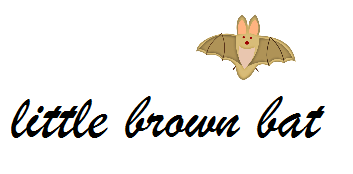In 2006, New England states started observing a disturbing trend in the local population of bats — a fatal new fungus was killing off thousands of bats across several species lines. Seven years later, more is known about White Nose Syndrome, but the fungus that has decimated local bat populations continuous to vex researchers. And the impact is alarming: the small brown bat, once the most common bat in the Northeast, may not be found regionally within 12 years if the spread of the fungus can’t be contained.
White Nose Syndrome, caused by the fungus Geomyces destructans, grows in the same damp conditions that bats tend to hibernate in. White in color, the fungus grows on the muzzle, ears, wings and tails while the bats hibernate. While the name is associated with the white marks that show up on the tips of the nose, the real danger is when bats get the fungus on their wings.
According to a release issued by Fish and Game in April of 2012, White Nose Syndrome was discovered in New York in 2006. By 2008, it was found in New Hampshire. In 2010, eight mines in the state were surveyed. All of them had bats infected with the fungus. In 2011, four of the largest surveyed hibernation locations only had a total of 16 surviving bats, and one mine was completely empty. Just two years earlier, those mines had been home to thousands of bats, which was one of the highest bat populations recorded. The little brown bat and the northern long-eared bat are the most heavily effected, with between 99 percent and 100 percent of the monitored population disappearing. The big brown bat, tri-colored bat and small-footed bat have also been effected by the fungus, but their numbers are harder to monitor because of their roosting habits, said Emily Preston, a wildlife biologist with New Hampshire Fish and Game.
Jacques Veilleux, a professor of biology at Franklin Pierce University who helps to track hibernaculars for the state, said that until 2011, he had been working in Surrey, studying the effect of White Nose Syndrome on summer captures.
“We’re seeing relative dramatic declines,” said Veilleux. In 2008, the state had its best cumulative year ever when it came to bat population, said Veilleux. The following year, numbers were down by 67 percent. The next, by 99.6 percent. In Peterborough in 2009, a summer colony of bats which had been studied for 16 years and was at least 40 years old, all but disappeared.
Source: Ledger Transcript, 10 December 2013
http://www.ledgertranscript.com/home/9645012-95/no-rebound-in-sight-for…

- Login om te reageren
